Browning Citori Hunter Grade II 28 Gauge 26" Break Action Shotgun – Black Walnut, Enhanced Features for Improved Accuracy and Comfort – 018259014 For Sale
$2,149.99
The Browning Citori Hunter Grade II 28 Gauge 26″ Break Action Shotgun elegantly combines style and functionality, ideal for discerning marksmen who appreciate the classic appeal of over and under shotguns. Built with the durability and performance synonymous with Browning, this firearm features a Grade II/III walnut stock with a smooth satin finish, offering aesthetic charm and comfort through its Inflex recoil pad. The shotgun’s receiver is enhanced with a resilient silver nitride finish and adorned with gold accents, nodding to Browning’s storied legacy, while blued barrels add a touch of sophistication. This masterpiece serves as a testament to exceptional craftsmanship for those demanding both practicality and elegance in their hunting firearms.
What is the difference between Browning Citori grade 1 and grade 2?
The primary differences between the Browning Citori Grade 1 and Grade 2 shotguns generally pertain to the level of engraving and finish on the gun. Grade 2 models typically feature more elaborate engraving patterns and higher-quality wood or more detailed stock checkering compared to Grade 1 models, which usually have simpler engraving and standard-grade wood. These aesthetic enhancements in Grade 2 models can result in a more luxurious appearance, potentially higher collector value, and often a higher price point. It’s always good to verify specific model years or releases, as features can vary.
What are the grade levels of Browning Citori?
The Browning Citori shotguns are available in several grade levels, typically distinguished by the quality of wood, engraving, and overall craftsmanship. Common grade levels include:
1. **Grade I** – The entry-level grade, usually with basic engraving and average quality walnut.
2. **Grade II/III** – Features improved engraving and higher quality walnut.
3. **Grade IV/V** – Offers more intricate engraving and premium grade walnut.
4. **Grade VI and above** – These higher grades exhibit the finest engraving, sometimes hand-engraved with gold inlays, and showcase the best quality wood.
Please note that specific grades and their features may vary over time and by model.
Is the Browning Citori Hunter a good gun?
The Browning Citori Hunter is generally considered a good shotgun, known for its reliability, craftsmanship, and versatility. As an over-and-under shotgun, it is popular for both hunting and sporting clays. Its quality construction, including a solid steel receiver and quality wood stock, contributes to its durability and balance. Users often praise its smooth action and consistent performance. However, as with any firearm, whether it is the right choice can depend on personal preference, intended use, and fit. It’s advisable to handle one yourself and consider expert reviews before purchasing.
Is the Browning Citori worth the money?
The Browning Citori is generally considered worth the money due to its reputation for high quality, reliability, and craftsmanship. It’s a popular choice among shotgun enthusiasts, hunters, and competitive shooters. The shotgun offers durability, precision, and a classic design, which contribute to its enduring popularity. However, whether it is worth the money can depend on individual needs, preferences, and budget. Some may find alternatives or other models better suited to their specific requirements. Ultimately, it is recommended to try the shotgun personally or seek opinions from experienced users to make an informed decision.
What is the difference between Citori and Citori 725?
The main differences between the Browning Citori and the Browning Citori 725 shotguns lie in their design, features, and technological advancements:
1. **Receiver Design**: The Citori 725 has a lower-profile receiver compared to the original Citori, which can contribute to a better shooting experience by providing a more direct aim and quicker target acquisition.
2. **Trigger System**: The Citori 725 features the FireLite Mechanical Trigger System, which is designed to offer a lighter, crisper trigger pull compared to the original Citori.
3. **Inertia vs. Mechanical Triggers**: The original Citori models generally have inertia-based triggers, which require the recoil of the first shot to reset, whereas the Citori 725 uses a mechanical trigger that does not require recoil, allowing for more reliable and faster follow-up shots.
4. **Back-Bored Technology**: The Citori 725 has the Invector-DS choke system and features Back-Bored Technology, which is designed to improve shot patterns and increase shot velocity by reducing friction.
5. **Recoil Management**: The 725 models often come with better recoil management systems, such as the Inflex II recoil pad, which aims to reduce felt recoil and increase comfort during shooting.
6. **Barrel Weight and Balance**: The 725 line is often praised for its improved balance and handling due to design adjustments, including modified barrel weights.
These differences reflect advancements in design and technology aimed at improving the shooter’s experience. The choice between the two models would depend on personal preference regarding these features and how they impact shooting style and comfort.
How much does a Browning Citori cost?
The price of a Browning Citori can vary depending on the model, features, and condition (new or used). Generally, new Browning Citori shotguns can range from approximately $1,800 to over $5,000. For the most accurate and up-to-date pricing, it’s best to check with authorized Browning dealers or online firearms retailers.
How long will a Browning Citori last?
The lifespan of a Browning Citori, like most well-made firearms, can be quite extensive if it’s properly maintained. With regular cleaning, proper storage, and routine maintenance, a Browning Citori can last for many decades, often being passed down through generations. Users often report them lasting well over 100,000 rounds. The key factors in ensuring its longevity include avoiding moisture exposure, using quality ammunition, and inspecting for any wear or damage periodically. If taken care of, a Browning Citori can effectively last a lifetime.
What is the meaning of Citori?
Citori is a model of over-and-under, double-barreled shotgun manufactured by Browning Arms Company. It’s known for its quality, reliability, and craftsmanship, and is popular among hunters and sport shooters. The name itself, “Citori,” does not have a specific meaning beyond its association with this firearm line.
Are all Browning Citori made in Japan?
Yes, all Browning Citori shotguns are made in Japan. They are manufactured by Miroku Corporation, which has been producing them since the Citori’s introduction in 1973.
Where is the Browning Citori Hunter made?
The Browning Citori Hunter is made in Japan.
Who makes the best over under shotgun?
Determining the “best” over-under shotgun is subjective and depends on individual preferences, intended use, and budget. However, some manufacturers are frequently noted for their high-quality over-under shotguns:
1. **Beretta** – Known for its craftsmanship and reliability, particularly the Beretta 686 and 694 series.
2. **Browning** – Renowned for models like the Browning Citori, praised for their durability and performance.
3. **Perazzi** – Offers high-end, customizable shotguns favored by competitive shooters.
4. **Caesar Guerini** – Recognized for both performance and aesthetics, with popular models like the Invictus.
5. **Blaser** – Noted for innovative designs and high precision, especially the Blaser F3 model.
Each of these brands has its own strengths and might appeal differently based on specific needs such as hunting, sporting clays, or trap shooting.
Does Browning Citori have ejectors?
Yes, the Browning Citori is equipped with ejectors.
What are the different grades of Browning shotguns?
Browning shotguns come in various grades that typically denote differences in quality, materials, craftsmanship, and features. Here are some of the common grades:
1. **Standard Grade**: Entry-level models that are designed for reliability and functionality, often with simpler finishes.
2. **Grade I**: These shotguns have basic but high-quality features with standard wood and simple engraving.
3. **Grade II**: These feature upgraded wood quality and more detailed engraving compared to Grade I.
4. **Grade III**: The wood quality is premium, and the engraving is significantly more intricate and artistic.
5. **Grade IV and above**: These grades often include elaborately detailed engravings, exhibition-grade wood, and additional custom features. Higher grades may be designated with letters or special model names.
6. **Custom Grades**: Browning also offers custom options where customers can choose specific features and detailing according to personal preference.
It’s important to note that the exact grading can vary depending on the specific model and production year as well as the market in which they are sold.
What are the different levels of shotguns?
Shotguns can vary based on design, functionality, and application, and they often fall into different levels or categories. Here are some common types or levels of shotguns:
1. **Single-Shot Shotguns**: These are basic shotguns that hold and fire only one shell at a time. They are simple and affordable, making them suitable for beginners or hunters looking for a basic firearm.
2. **Pump-Action Shotguns**: These shotguns require manual cycling of the action by pumping the fore-end back and forth. They are reliable and popular for hunting, sport shooting, and home defense.
3. **Semi-Automatic Shotguns**: These shotguns fire one round with each pull of the trigger and automatically reload the next round. They are favored for their fast firing speed and versatility in various shooting sports and hunting scenarios.
4. **Double-Barrel Shotguns**: This category includes both side-by-side and over-and-under configurations. These shotguns have two barrels, allowing two shots to be fired in quick succession. They are often used in sport shooting and bird hunting.
5. **Tactical Shotguns**: Designed for law enforcement and military use, these shotguns are optimized for combat situations and often feature accessories such as tactical rails, adjustable stocks, and improved sights.
6. **Bolt-Action Shotguns**: Less common, these shotguns use a bolt action mechanism similar to bolt-action rifles. They can offer high accuracy and are used in certain hunting and target shooting applications.
7. **Lever-Action Shotguns**: Similar to lever-action rifles, these shotguns use a lever to cycle the action. They offer a nostalgic design and can still be practical for hunting and shooting sports.
Each of these levels or types serves different needs and preferences among shooters, and the choice can depend on the intended use, whether for hunting, sport shooting, defense, or collecting.
What are shotgun grades?
Shotgun grades refer to the classification of shotguns based on their quality, craftsmanship, features, and overall construction. Different manufacturers use varying grading systems, which can include factors such as the quality of materials, intricacy of design, level of embellishments like engraving, and the precision of the gun’s assembly. High-grade shotguns typically feature premium materials and intricate engravings, while lower-grade shotguns might focus more on functionality with simpler finishes. These grades help buyers determine the level of craftsmanship and potential price range of a shotgun.
Be the first to review “Browning Citori Hunter Grade II 28 Gauge 26" Break Action Shotgun – Black Walnut, Enhanced Features for Improved Accuracy and Comfort – 018259014” Cancel reply
Related products
Browning Citori Hunter Grade II
Browning Citori Hunter GradeII 16 Gauge 26" Break Action Shotgun – 18259514
Browning Citori Hunter Grade II
Browning Citori Hunter GradeII 28 Gauge 28" Break Action Shotgun – 18259813
Browning Citori Hunter Grade II
Browning Citori Hunter Grade II
Browning Citori Hunter Grade II Walnut 26" Over Under .410 Shotgun, Blued – 018259914
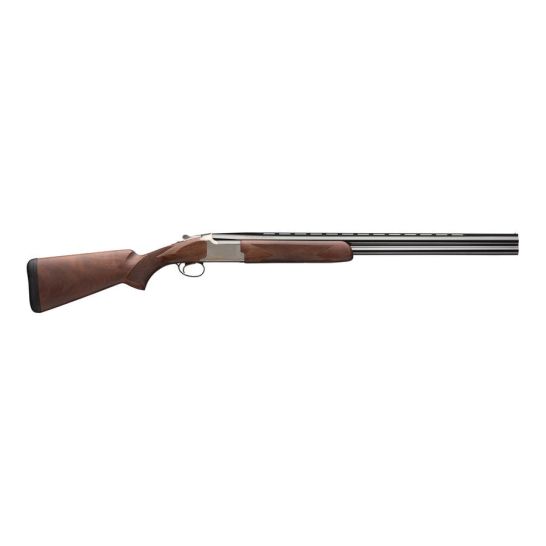
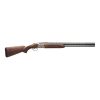
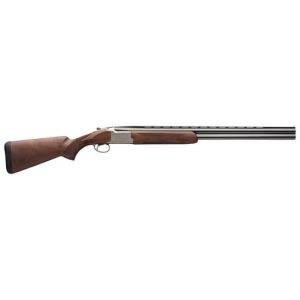
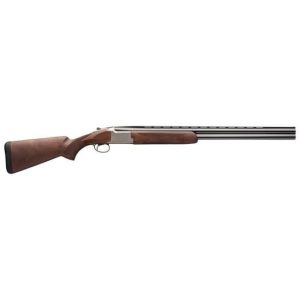
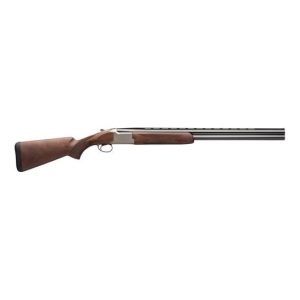
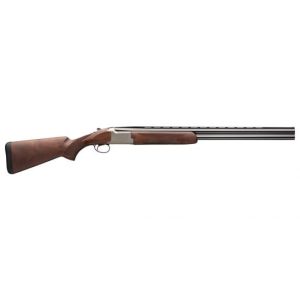
Reviews
There are no reviews yet.